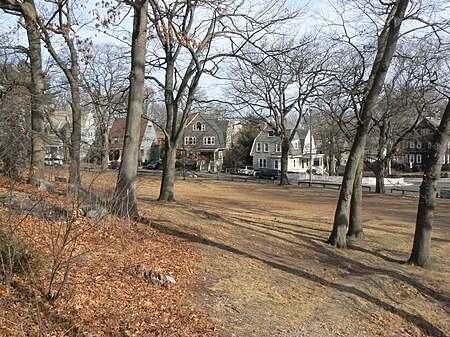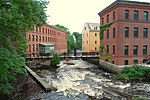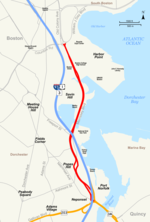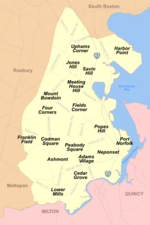Savin Hill
1630 establishments in MassachusettsDorchester, BostonHistoric districts in Suffolk County, MassachusettsHistoric districts on the National Register of Historic Places in MassachusettsIrish-American neighborhoods ... and 6 more
NRHP infobox with nocatNational Register of Historic Places in BostonNeighborhoods in BostonPopulated places established in 1630Streetcar suburbsUse mdy dates from January 2016

Savin Hill is a section of Dorchester, the largest neighborhood of Boston, Massachusetts, United States.Named after the geographic feature it covers and surrounds, Savin Hill is about one square mile in area, and has a population of about 15,000 people. Savin Hill Beach and Malibu Beach are nearby and are a resource for surrounding communities. Rail and bus routes give access to and from Savin Hill, especially the Savin Hill station. It is the home of the Savin Hill Yacht Club which was founded in 1875 as the Savin Hill Beach Association but later changed its name in 1888. The club is located off Morrissey Boulevard, a main artery in the area.
Excerpt from the Wikipedia article Savin Hill (License: CC BY-SA 3.0, Authors, Images).Savin Hill
Savin Hill Avenue, Boston Dorchester
Geographical coordinates (GPS) Address Nearby Places Show on map
Geographical coordinates (GPS)
| Latitude | Longitude |
|---|---|
| N 42.309166666667 ° | E -71.050277777778 ° |
Address
Savin Hill Avenue 188
02125 Boston, Dorchester
Massachusetts, United States
Open on Google Maps







